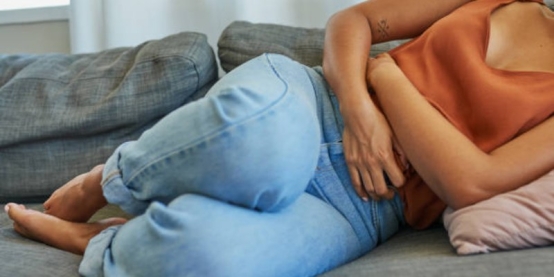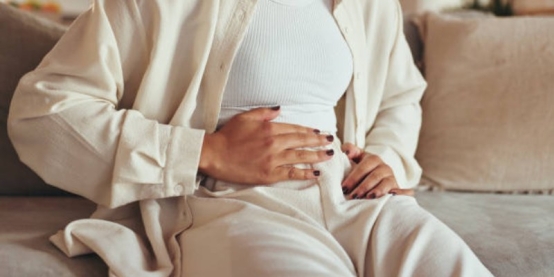Natural Remedies That Can Help With Painful Periods
Menstrual cramps, or dysmenorrhea, afflict millions of women every month. For others, the pain is short-lived and not so terrible, but for others, it is severe enough to disrupt daily life. Painkillers are readily reached for quick relief by many women, but growing interest in natural pain relievers has seen alternative treatments that can bring relief without the use of medication.
Understanding Painful Periods
Menstrual cramps occur when the uterus tightens to shed its lining. Prostaglandins, hormone-like chemicals, bring on these contractions. Elevated prostaglandin levels intensify cramps at times, even transmitting pain to the lower back, thighs, or triggering headaches and fatigue.

All period pain is not created equal.
Light cramps: Normal and normal, usually managed by lifestyle remedies.
Severe pain: May be signs of conditions such as endometriosis, fibroids, or polycystic ovary syndrome (PCOS).
Being able to distinguish between regular discomfort and symptoms that require a trip to your doctor is the key to good menstrual health care.
Lifestyle Remedies That Relieve Period Pain
Heat Therapy
The use of heat is among the easiest and most effective home remedies for menstrual cramps. A heating pad, a hot water bottle, or a warm bath relaxes the uterine muscles and increases the flow of blood, relaxing the intensity of cramps. Studies have shown that heat therapy is as effective as over-the-counter drugs for most women.
Exercise
Movement may be the last thing on the mind during a painful period, but light exercise helps. Activities such as Yoga, stretching, and low-impact cardio release endorphins—the body's natural painkillers—while reducing Stress and improving circulation.
Sleep and Rest
Enough sleep is essential when menstruation occurs. Inadequate sleep can enhance pain sensitivity, whereas sound sleep preserves hormone balance and facilitates healing. A routine sleep regimen helps the body adjust and recover more effectively.
Stress Control
Severe Stress worsens cramps. Stress-reducing techniques like meditation, deep Breathing, or mindfulness help to decrease tension and ease pain. These practices not only improve pain management but also contribute to overall wellbeing.
Dietary and Herbal Remedies
What you consume during and leading up to your period will directly contribute to the amount of pain you experience. An anti-inflammatory diet reduces prostaglandin activity and minimises discomfort.
Foods That Reduce Inflammation
Leafy greens such as spinach and kale
Fatty fish such as salmon and mackerel
Nuts, seeds, and whole grains
Fruits that contain antioxidants, such as berries and oranges
Hydration
Drinking warm water and herbal teas keeps the body hydrated and relieves bloating. Herbal teas such as chamomile, peppermint, and ginger not only relax but also relieve cramps.

Herbs and Supplements
Some of the natural supplements have been studied for their role in reducing period pain:
Ginger: Suppresses inflammation and acts well on cramps.
Turmeric: Its curcumin content reduces inflammation.
Magnesium: Relaxes muscles and relieves spasms.
Omega-3 fatty acids: In fish oil, they assist with maintaining hormone balance and suppressing pain.
Vitamin B1 and Vitamin E: Increase energy metabolism and reduce muscle tension.
Foods to Limit
Certain foods may exacerbate cramps since they produce inflammation or water retention. Limit:
Excessive Caffeine
Highly processed meals
Candy and cookies
Very salty dishes
Alternative Therapies
Acupuncture and Acupressure
Methods of traditional Chinese medicine have been investigated for their ability to reduce cramps. Acupuncture stimulates some points which improve blood flow and reduce uterine contractions. Acupressure is similar to acupuncture, but uses hand pressure instead of needles. Both have been demonstrated in studies to relieve menstrual pain in some women.
Aromatherapy and Essential Oils
Aromatherapy with oils such as lavender, clary sage, and peppermint could lower Stress and ease discomfort. The oils can be inhaled from a diffuser or mixed with carrier oils and used for calming abdominal massage.
Massage Therapy
Abdominal massage, especially when coupled with essential oils, could ease cramping by relaxing muscles and reducing Stress hormones. Calming circular strokes over the lower abdomen may relax tension.
Natural Everyday Activities That Avoid Violent Cramps
Prevention is as important as a cure. The use of natural treatments in everyday lifestyles can reduce the intensity of future periods.
Everyday Exercise: Staying fit all month long controls hormones and reduces pain.
Monitoring the Cycle: Understanding when to anticipate cramps makes one more prepared with diet, relaxation, and remedies.
Year-Round Balanced Diet: Consistent intake of anti-inflammatory foods reduces the severity of cramps in the long term.
When to See a Doctor
Natural treatments work, but expert advice is necessary when signs and symptoms indicate an underlying cause. See a doctor if:
Pain is disabling
Periods are abnormally heavy or irregular
Sudden pain worsens without cause
Problems such as endometriosis, fibroids, or PCOS may require professional treatment. Natural remedies may be used alongside medical treatment, but they are not a replacement for diagnosis or treatment if needed.

Safe Use of Natural Remedies
Natural remedies are powerful, and safety must be considered.
Some supplements, including turmeric and omega-3 fatty acids, may interact with drugs like blood thinners.
Dosage and consistency are key to being effective. Taking too much of a supplement can cause side effects, and sporadic use will provide little benefit.
Consultation with a healthcare provider before adding new herbs or supplements to one's routine ensures safe and effective use.
Key Takeaways on Natural Remedies for Painful Periods
Natural pain-relief treatments for menstrual cramps provide real relief without overmedication. Heat treatment, gentle exercise, and Stress reduction ease pain during menstruation. An anti-inflammatory diet supplemented by evidence-based herbs and supplements reduces inflammation and cramping. Alternative therapies such as acupuncture, massage, and aromatherapy present additional options for those seeking holistic treatment.
While these methods suit most women, severe or persistent pain requires professional care to rule out potential underlying conditions. Interfusing medical consultation with the utilisation of safe, natural remedies yields the most productive and harmonious treatment of menses.